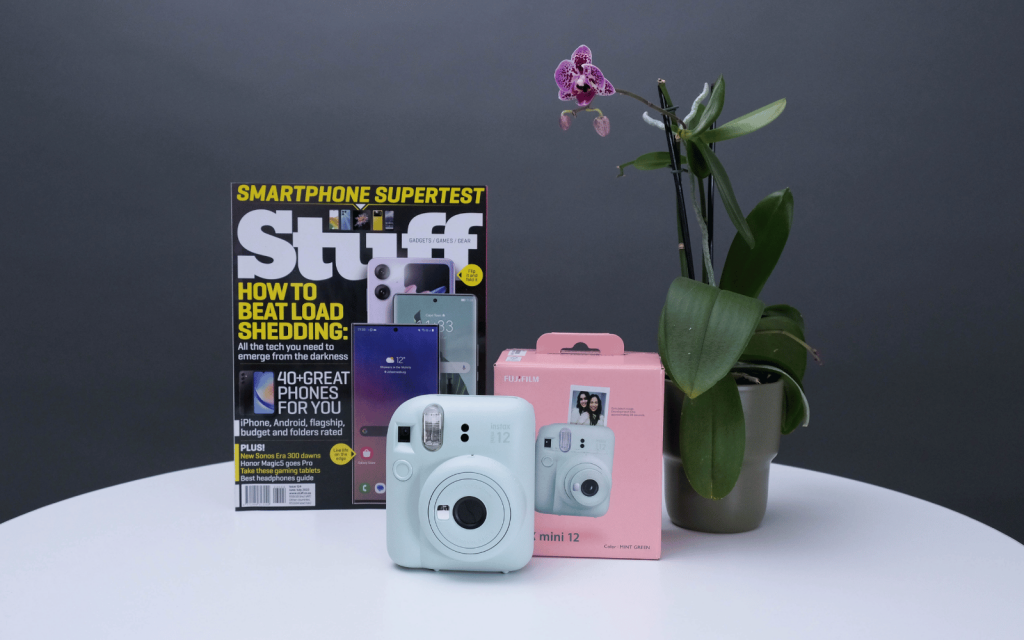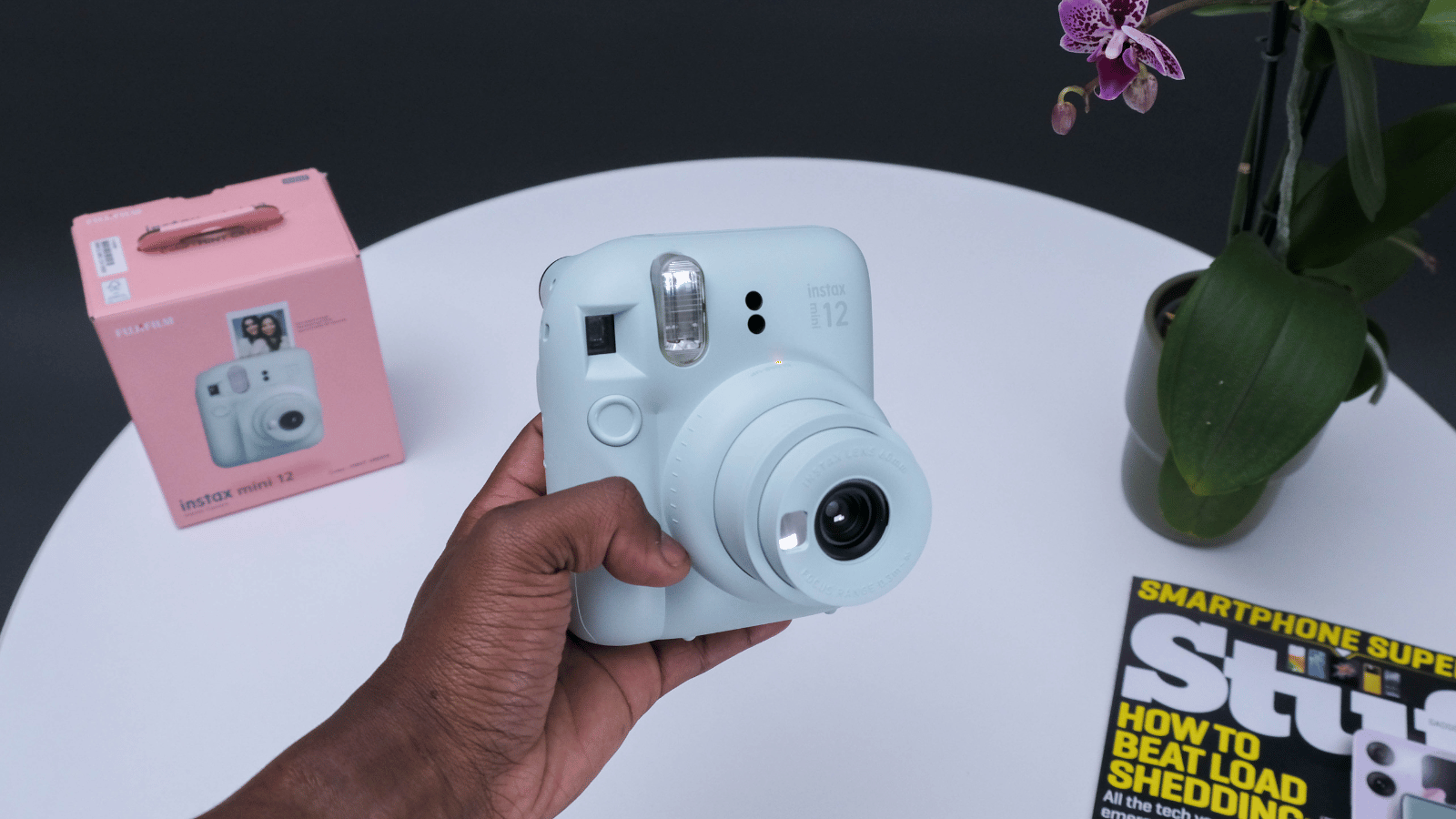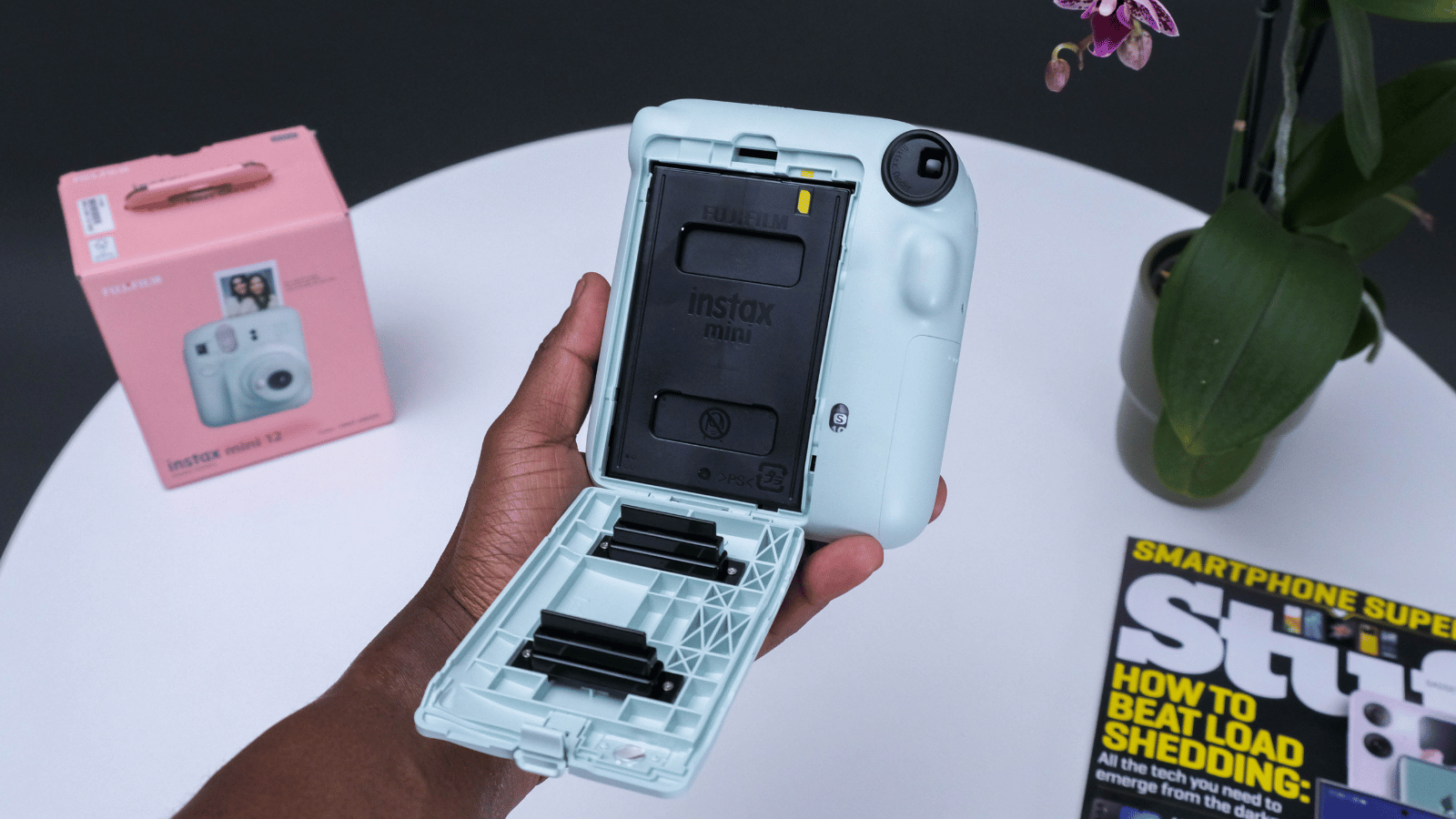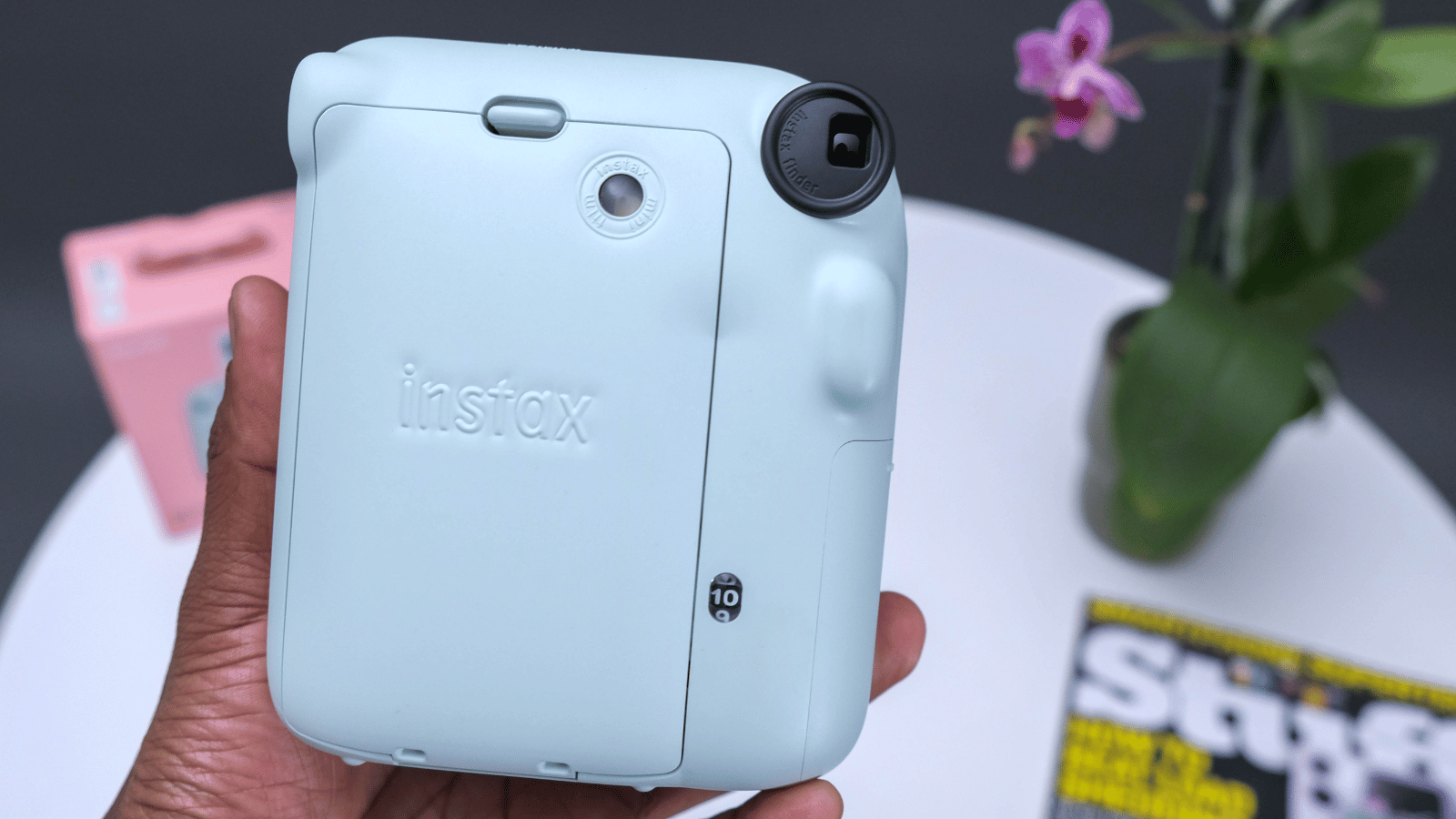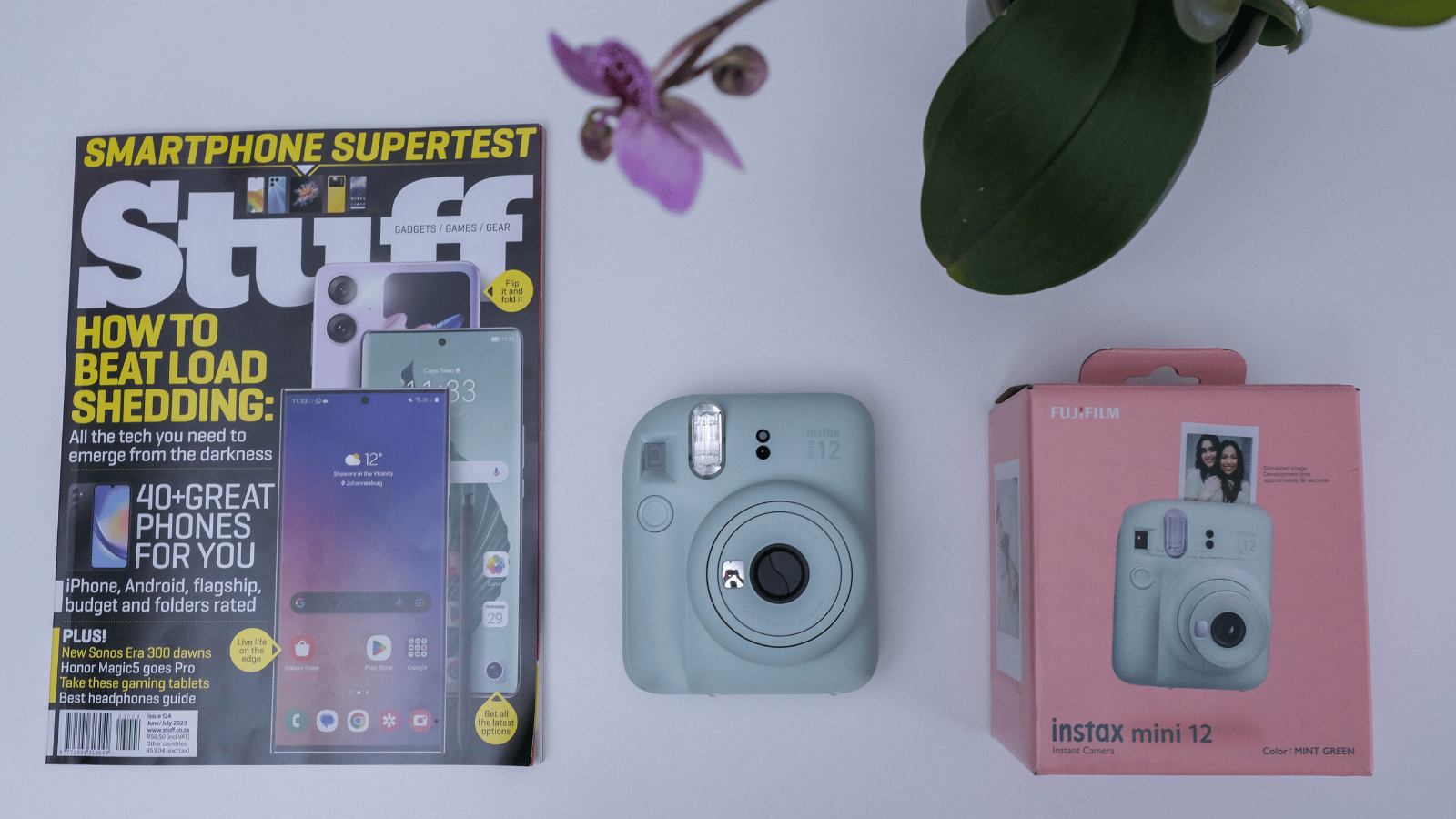The Instax Mini 12 is for avid photographers that want a bit of analogue in their lives. Unless you're already holding the Mini 11. Then it might be worth the three year wait for Instax's next refresh of the lineup. If you do happen to make the upgrade (or are new to the scene), you won't be disappointed in the fairly quick print times, decent image quality and 'it' factor that'll make you the coolest hipster at the party.
-
Design
-
Features
-
Performance
-
Value
-
App
Huh. We’re somehow already in 2023. It’s not the first time we noticed that, but it does mean that we get to play with a new Fujifilm Instax camera. The Instax Mini 12, to be specific. The not-so-retro instant film camera that fits in your bag and makes partygoers go “woooow…” is back to remind you why you’re the one who usually takes the pictures.
Pretty in Mint Green
Instax’s Mini 12 is hardly revolutionizing the not-so-retro instant-film camera space. We’d forgive you for mistaking Instax’s twelfth generation for its Mini 11 at a glance. It’s only when you start digging deeper that you’ll notice the differences. Like the more refined and rounded design that makes for a prettier camera on paper but adds a level of slipperiness that creates an altogether more anxiety-inducing affair than we’d have liked.
We get it. Fujifilm is trying to make this thing more appealing to the younger generation, and a bubblier design might do that. Still, we’d have liked at least a bit of rubber to grip onto here and there, even if it does disrupt the flow Fujifilm is going for. It’s not all bad, though. Each box includes a colour-matching strap. Use it. Wii owners will best understand why.
On that, our review model rocked up sporting a Mint Green hue, though Blossom Pink, Clay White, Lilac Purple and Pastel Blue are also on offer.
Not all the changes are at the cost of the user, however. The biggest (and best) change has nothing to do with looks, and everything to do with functionality. Fujifilm’s removed the physical on/off button that’s caused much ado, and replaced it with a twisty lens that sits on the front of the camera’s face. It’ll also let you fiddle with the camera’s one other shooting mode, but more on that later.
Light on features, heavy on vibes
You won’t struggle to get the Mini 12 set up and going, whatever your affinity towards cameras. Fujifilm is marketing this thing towards younger adults and teenagers. That also means it’s not exactly packed with features, though the Mini 12 has got a few more to streamline the process. One of those is the already mentioned twist-lens, which doubles as the on/off switch and the close-up feature that’s carried over from the Mini 11.
That twisty lens is probably our favourite addition to the line-up. When the lens is closed, the device is off. Twist it once and the device will power on in the standard mode that you’re most likely to use. Twist it again and it’ll switch to taking 11.8-inch (0.3m) close-ups instead of the standard 19.7-inch (0.5m) shots. We won’t pretend we figured it out instantly. We had to peek at the manual to get ourselves moving in the right direction.
Another addition is parallax correction, Fujifilm’s answer to the complaints of previous models that massively helps out the viewfinder’s accuracy to better match what you’ll see printed. It’s a small but effective change we’re surprised took as long as it did to show up.
Flash is still a must-have, as in, you don’t get a choice. As one of the bigger complaints from the Mini 11, it’s nice to see Fujifilm has partially addressed it by adding auto flash exposure. You won’t get rid of the flash entirely, but it’ll adjust the intensity depending on what the camera sees in its 0.3m to 2.7m range. An improvement, but it’s a decision we’re hoping is down to the user and not Instax by the time the Mini 13 rolls around.
Over Exposed
Otherwise, not much has changed. The Mini 12 still sports the same 60mm f/12.7 lens you’d find in the Mini 11, and a close-up mode that’ll reduce the focus from 0.5m to 0.3m. Shutter speeds are carried over, ranging between 0.5 and 1/250 seconds along with a set ISO-equivalent of 800.
That’s always been a problem with Instax’s lineup. If you’re an owner of an older model, you’ll already be familiar with the Mini’s aversion to sunlight. Although you do get some great night or indoor shots, which is where the Mini 12 shines. You’ll still have to know what you’re doing, as the whole Instax gimmick is a lack of trial and error. Unless you’re loaded and don’t mind the nearly R300 price tag for a twenty-pack of film, of course. We do, so we wanted to get our shots right the first time.
Fortunately, thanks to the addition of parallax correction, and the auto flash exposure that mostly did its job well (apart from a few hiccups on our end), that was the case for most of our prints. Those will take around 90 seconds to develop so be patient.
The App™
If you thought this was going to be a purely analogue affair, think again. Fujifilm’s gone and included a mobile app available on iOS and Android known as Instax Up! Its purpose? To turn those rather expensive pieces of film into digital media. It works by “scanning” (also known as photographing) your physical print, uploading them to the app and allowing for some basic customization like cropping, removing reflections or colour corrections.
Personally? We used the app to make sure it worked – it does – but that’s as far as we went. At that point, we’d be better off using our smartphone camera to take a better image that’s instantly shareable without having to spend thousands on film packs. Not that we were completely averse to it – we can appreciate its uses, and it’s an entirely optional experience. If it’s your thing, you might be more willing to try out one of Instax’s printers that cost a little less and remove the whole camera bit from the equation.
Fujifilm Instax Mini 12 verdict
For a device that’s going to be the trendy instant film camera for the next three years, we don’t have much to complain about. Apart from the slight changes to the design that make it more of a pain to hold, we’re mostly happy with the changes Fujifilm has put out this year. We’d have preferred manual flash control, but auto flash exposure is a decent compromise when coupled with a more accurate viewfinder.
It’s worth noting the price – coming in at R1,350 – roughly R150 more than the Mini 11 launch. Is it worth the extra cheddar? Yes, especially if you’re a newcomer to the market. If you’re already rocking a Mini 11 however, it might be worth waiting ‘til the Mini 13 hits shelves.

